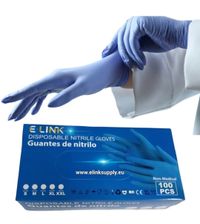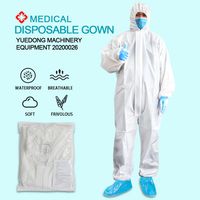Urea Fertilizer
Urea fertilizers are widely used in agriculture. They are considered an economic nitrogen source.
The chemical formula of urea is CO(NH2)2 and, in nature, urea is excreted in the urine of mammals. Commercial urea fertilizers are produced by reacting ammonia with carbon dioxide.
In its solid form, urea is provided as either prills or granules. Granules are slightly larger than prills and are more dense. Both prilled and granular urea fertilizers contain 46% N.
Nitrogen leaching and volatilization rates are usually higher when using the prilled form. Therefore, granular urea fertilizers are 15-20% more efficient than prilled.
Urea 46% Nitrogen
Fertilizer urea can be purchased as prills or as a granulated material. In the past, it was usually produced by dropping liquid urea from a “prilling tower” while drying the product. The prills formed a smaller and softer substance than other materials commonly used in fertilizer blends. Today, though, considerable urea is manufactured as granules. Granules are larger, harder, and more resistant to moisture. As a result, granulated urea has become a more suitable material for fertilizer blends.
Reactions of Urea Fertilizers in soil
Plants cannot absorb urea nitrogen. In order for the plant to absorb nitrogen applied as urea, nitrogen must be converted into ammonium (NH4+) and nitrate (NO3 ), which are the nitrogen forms that plants can use.
Once applied, the urea fertilizer reacts with water in the soil and with urease, an enzyme that exists abundantly in soils, and goes through the hydrolysis process, in which urea is converted into ammonium carbonate.
Ammonium carbonate is then converted into ammonium or to ammonia gas (NH3), depending on conditions such as pH, temperature and soil moisture.
Ammonia gas readily volatilizes from the soil and, as a result, significant losses of nitrogen may occur if conditions favor formation of ammonia rather than ammonium.
High soil pH and temperature result in greater losses of nitrogen.
Product Description
In common with most commercial nitrogen fertilizers, urea is manufactured from anhydrous ammonia (NH3). The high analysis of urea—46% N—is the main reason for the low cost of this form of nitrogen fertilizer. Freight costs and storage and handling are all lower than with lower analysis fertilizers such as ammonium nitrate (34-0-0) or ammonium sulphate (21-0-0).
Advantages of fertilizer urea
• can be applied to soil as a solid or solution or to certain crops as a foliar spray.
• Urea usage involves little or no fire or explosion hazard.
• Urea's high analysis, 46% N, helps reduce handling, storage and transportation costs over other dry N forms.
• Urea manufacture releases few pollutants to the environment.
• Urea, when properly applied, results in crop yield increases equal to other forms of nitrogen.
• Incorporate urea for best use
For further Inquiries Contact us
Urea (Prill) specification :
PROPERTY | UNITS | TEST METHOD | SPEC Value |
N2 content | wt% | BS DIN EN 15478 | minus 46 |
biuret content | wt% | BS DIN EN 15479 | Max 1.0 |
Moisture | wt% | ISO 760 | Max 0.3 |
Particle size(1-2.4mm) | wt% | ISO 8397 | minus 90 |
Urea Formaldhide(UF) | wt% | HFT 1.6 & SBB 0071-02-E | Max 0.4 |
Formaldhide in Industrial Urea | PPM | HFT 1.6 & SBB 0071-02-E | Max 100 |
Anticake(eurasoft -150) | PPM | Eurasoft Methods | Max 1000 |
Anticake in Industrial Urea | PPM | Eurasoft Methods | Max 25 |
Urea (Granular) specification :
Physical & Chemical Property | current |
Biuret (wt%) MAX | 1.0(max) |
Water (wt%) MAX | 0.5 (max) |
Formaldehyde (wt%) MAX | 0.6 |
Total nitrogen (wt%) | 46.1(min) |
NH3 (wt%) | 0.015(max) |
Total nitrogen (min wt%) | 46 |
Urea (wt%) | 97.93 |
bulk density (g/litre) | 0.73 – 0.77 |
Physical state | White granules solid |
ave. MW | 59.2 |
Size distribution | 2-4mm 90%wt (Min) |
Crushing strength (kg/granule) | 3.0 kg min On 3.15 mm dia. Granule size |
PROCEDURES FOR UREA PRILL & GRANULLE
1.Buyer sends LOI by email to alti@elinksupply.eu
2. The seller sends the FCO against the LOI.
3. The buyer will send the signed FCO and ICPO with the complete bank details and proof of funds (POF) RWA via swift MT199 ( Bank to Bank ) or by email.
4. The seller will send a draft of the contract and a draft of SBLC.
5. Within 48-72 hours, the buyer will review, sign and seal the contract and return it to the seller.
6. The seller will be providing the buyer with the agreed draft of SBLC.
7. The buyer will confirm the draft SBLC in accordance with the SPA and return it to the seller.
8. The seller will confirm the draft SBLC and send the 12 proforma invoices to the buyer. (In case of Spot buy it will be 1 invoice against 1 SBLC).
9. Within 3 banking days, the buyer's bank will send via mt799 RWA to the seller's bank.
10. Buyer's bank will issue and send MT760/SBLC to seller's bank.
11. Within 7-10 banking days after receiving MT760 / SBLC, the full POP, and the 1% PB will be send to buyer.
12. A 1% PB will be sent as confirmation via MT bank to bank.
13. The contract starts running.
14. Payment will be released by MT103 after SGS & B/L at Departure port.
We will only send official documents duly signed and accepted by the company via OUR CORPORATE e-mail in an official way, if you receive a document from our company by any other means, it will not have commercial validity and we will not honour the document . Therefore, we will not be responsible for offers received in an inappropriate way or means.
For the latest prices Contact us
If You Want To Go Fast Go Alone, If You Want To Go Far Go Together.



.jpeg/picture-200?_=1822c3a0480)






.jpg/picture-200?_=17708328e78)





